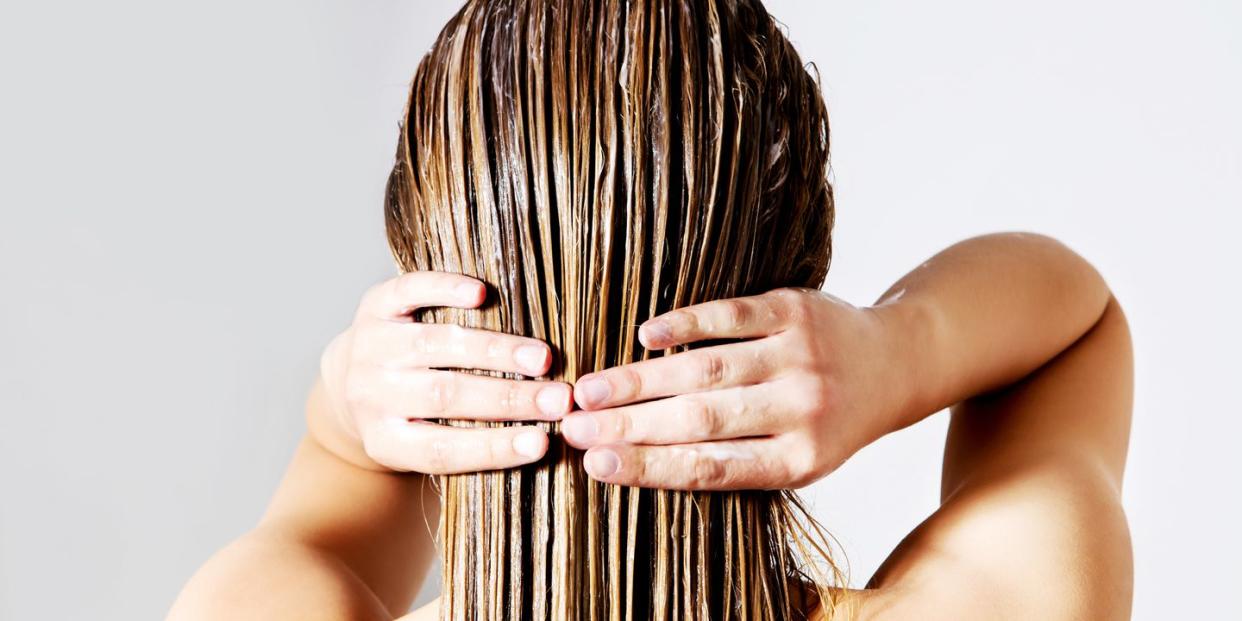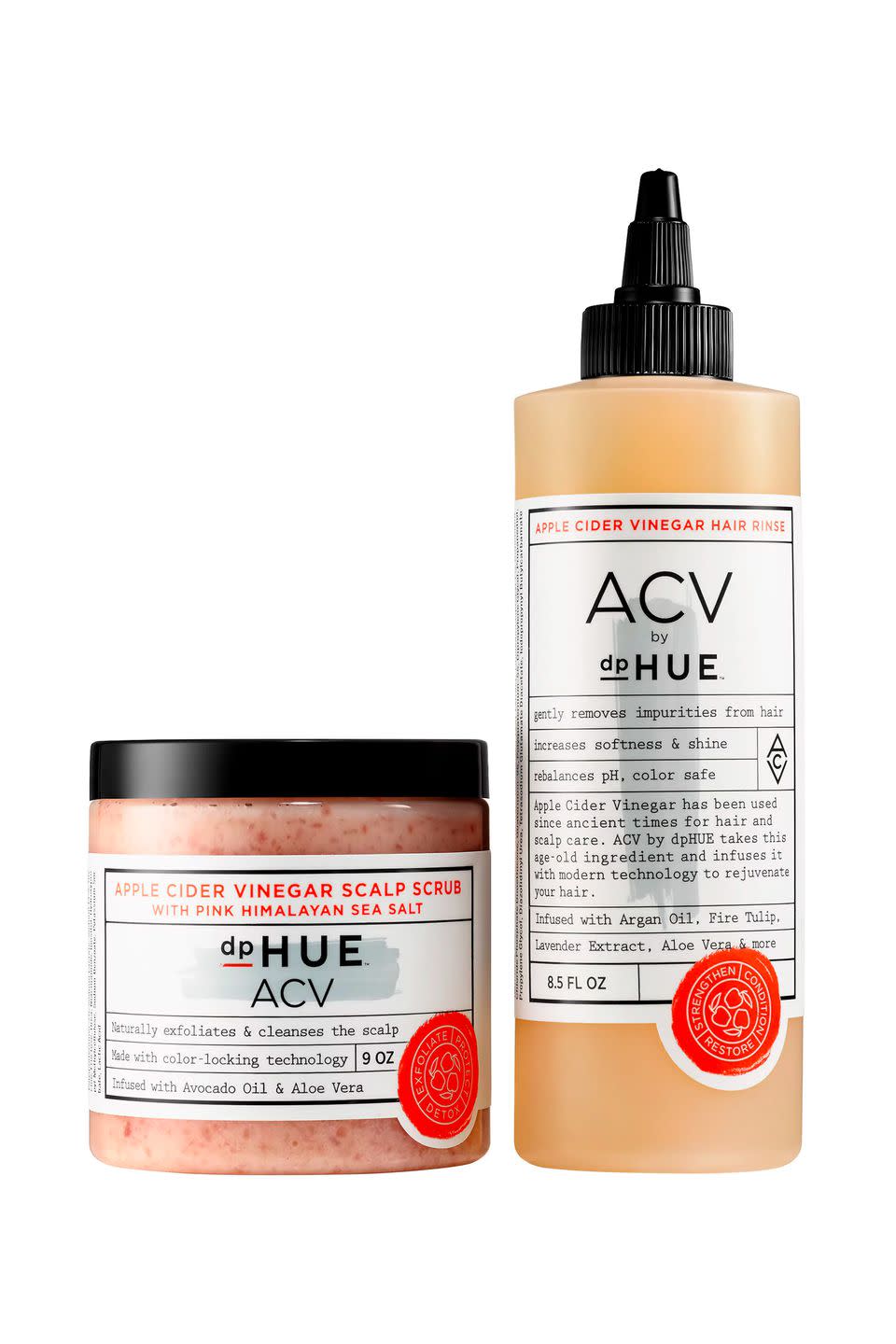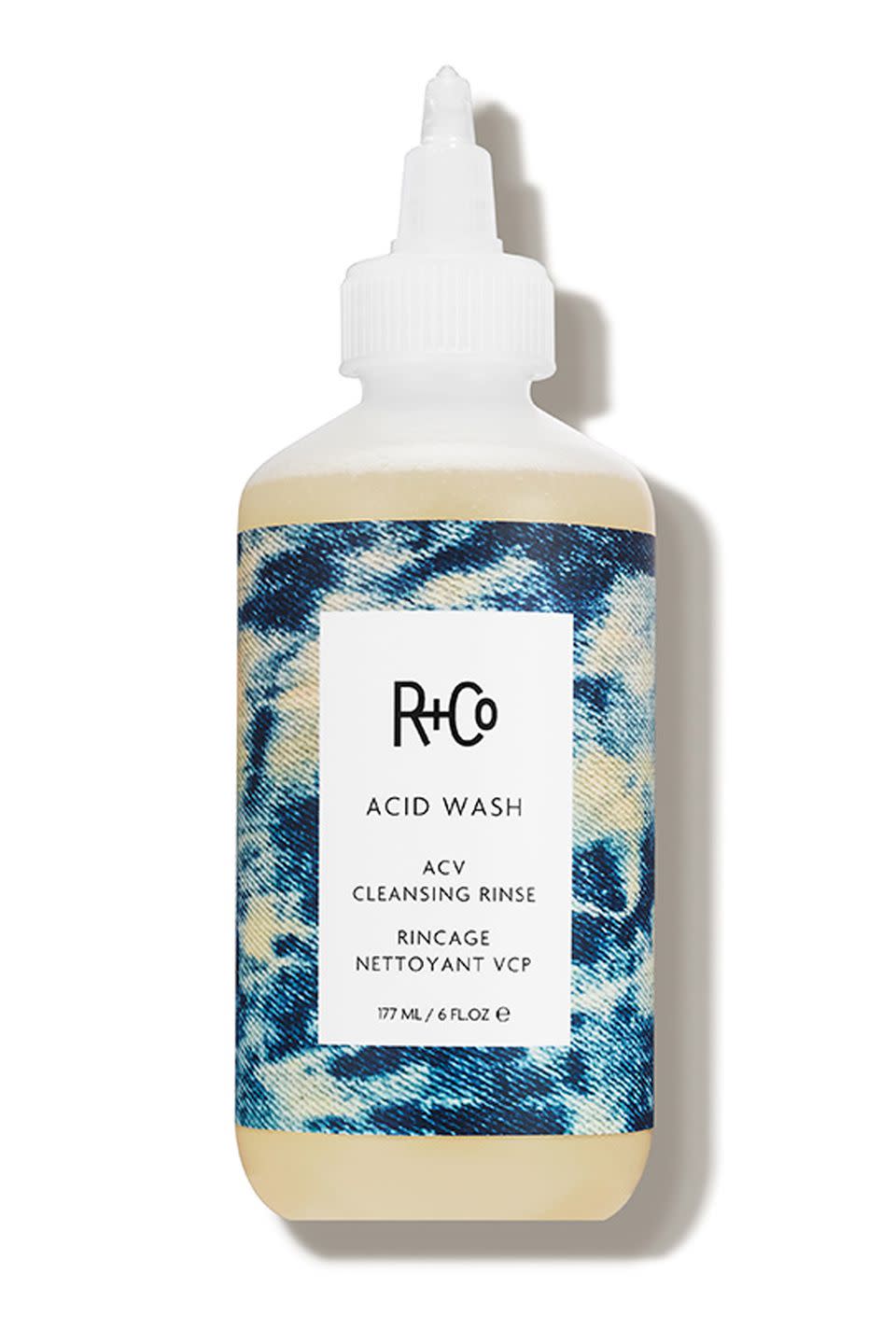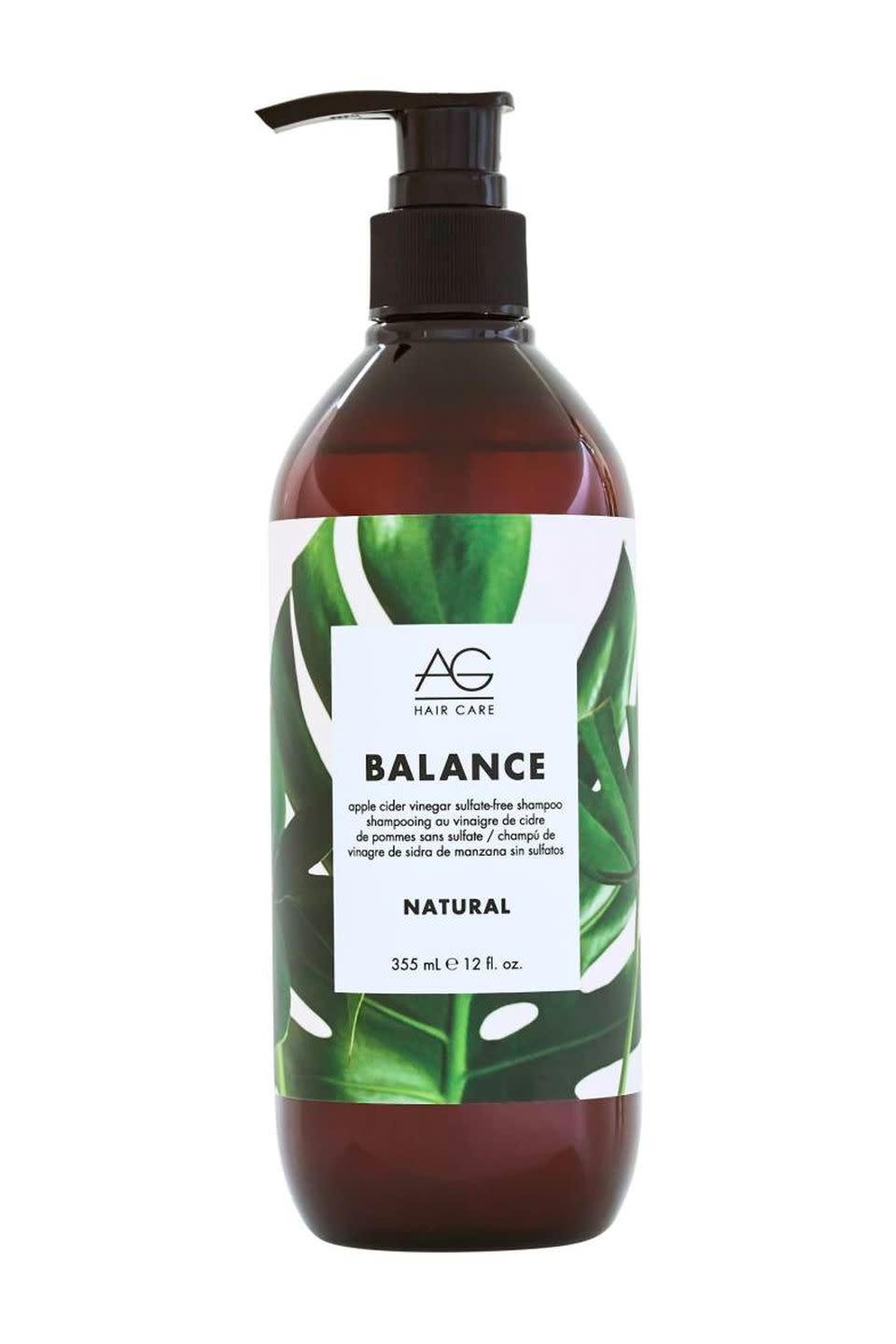Is Apple Cider Vinegar Good For Your Hair?

There are many uses for apple cider vinegar (ACV), like taking shots of it to boost your immune system or using it as a facial toner, but perhaps the most popular at the moment are ACV-based treatments for dry and damaged hair.
The sudden interest comes from a familiarity with ingredients that are both safe and effective, according to haircare veteran Howard McLaren, the co-founder and creative director of R+Co. Unlike hard-to-pronounce chemicals and synthetic ingredients, apple cider vinegar is all natural-and it also happens to product dramatic results when used correctly. Here’s everything you need to know about how it works, who it's for, and how to use it.
HOW DOES IT WORK?
If you frequently wash and style your hair, you're likely to have product build-up, which can leave your strands looking frizzy, dull, and damaged.

Because ACV has high levels of acetic acid, it purifies the accumulation of products by lowering pH levels. Balanced pH levels are important when it comes to hair care because they create a consistency in texture. Shampoo containing this acid will help to smooth the cuticle and add moisture back into your strands without stripping away any natural oils.
This miracle elixir is also packed with both vitamin C and B, which supports the exfoliation of the scalp, ultimately reducing the amount of dandruff you produce. Scalp scrubs containing ACV naturally exfoliate by unclogging pores, removing product build up, and eliminating dead skin cells.
Using an ACV rinse after color treatment can also be helpful in reversing any damage that was done during the process. Another added benefit: it works as an antimicrobial that helps control sensitivity to products that may cause itchiness.
APPLE CIDER VINEGAR vs. ACV SHAMPOO: WHAT'S THE DIFFERENCE?
With an abundance of products and treatments on the market, it can be challenging to know exactly what your hair does or doesn't need. McLaren recommends that those looking for drastic results opt for a shampoo made by a beauty brand rather than simply purchasing a bottle from the grocery store.

The difference is that shampoo products made with ACV tend to contain other ingredients that offer additional benefits to your hair and scalp, like aloe vera leaf juice (which serves as a deep conditioner) and tamanu seed oil (which helps strengthen hair.)
Another selling point? Shampoos and washes smell significantly more pleasant than straight ACV, which is notorious for its harsh odor. (If you still find the scent to be overpowering, try adding essential oils like rosemary and lavendar to decrease your sensitivity.)
ACV is safe to use on all hair types and textures and can be applied as often as desired; however, like with any product, you don’t want to overdo it. Try starting out with a couple of treatments a week and slowly increase to more frequent use in order to safely see how your hair will react.
HOW TO TO USE IT

Apply about 2 to 3 tablespoons of the product all over your hair. Massage it into your scalp, allow the treatment sit for a couple of minutes, and then, carefully rinse. Because all hair types are different, you can choose to use the ACV rinse as a shampoo replacement or opt to do your regular hair care routine afterwards. It all depends on what works best for you and your hair.
The biggest benefit of using the treatment is that you can expect to see an improvement immediately after. Continuous use should result in stronger, shinier, and softer hair -who wouldn't want that?
You Might Also Like

